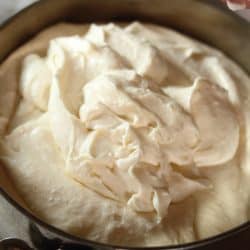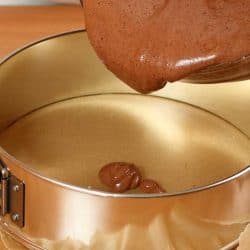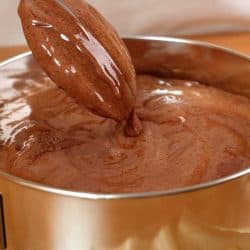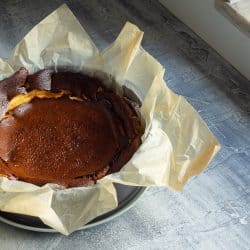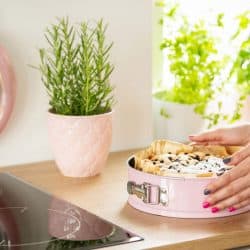Nowadays, most springform pans are non-stick. But seasoned bakers will tell you it is still a good idea to grease or line the pan before adding your batter. So, which is the best method? We've researched whether greasing or lining a springform pan is best, and the answer may surprise you.
Before you start baking, first refer to the recipe's recommendations whether to grease or line your pan. If you have a choice, it is your preference! Greasing the pan will enable a smooth release, and a flavorful, spreadable grease can enhance the flavor of your dessert. Lining the pan will also allow you to effortlessly retrieve the dessert and provide a transfer method, for instance, if you are moving the cake or tart to a serving platter for presentation.
Springform pans come in various sizes to accommodate the most delicate desserts, from cheesecakes to trifles, or even prepare a savory quiche or deep-dish pie. Properly greasing or lining your pan makes for a flawless retrieval. Please keep reading to learn how to grease the pan, which type of grease works best, and what to line it with if you opt or are recommended not to grease the pan.
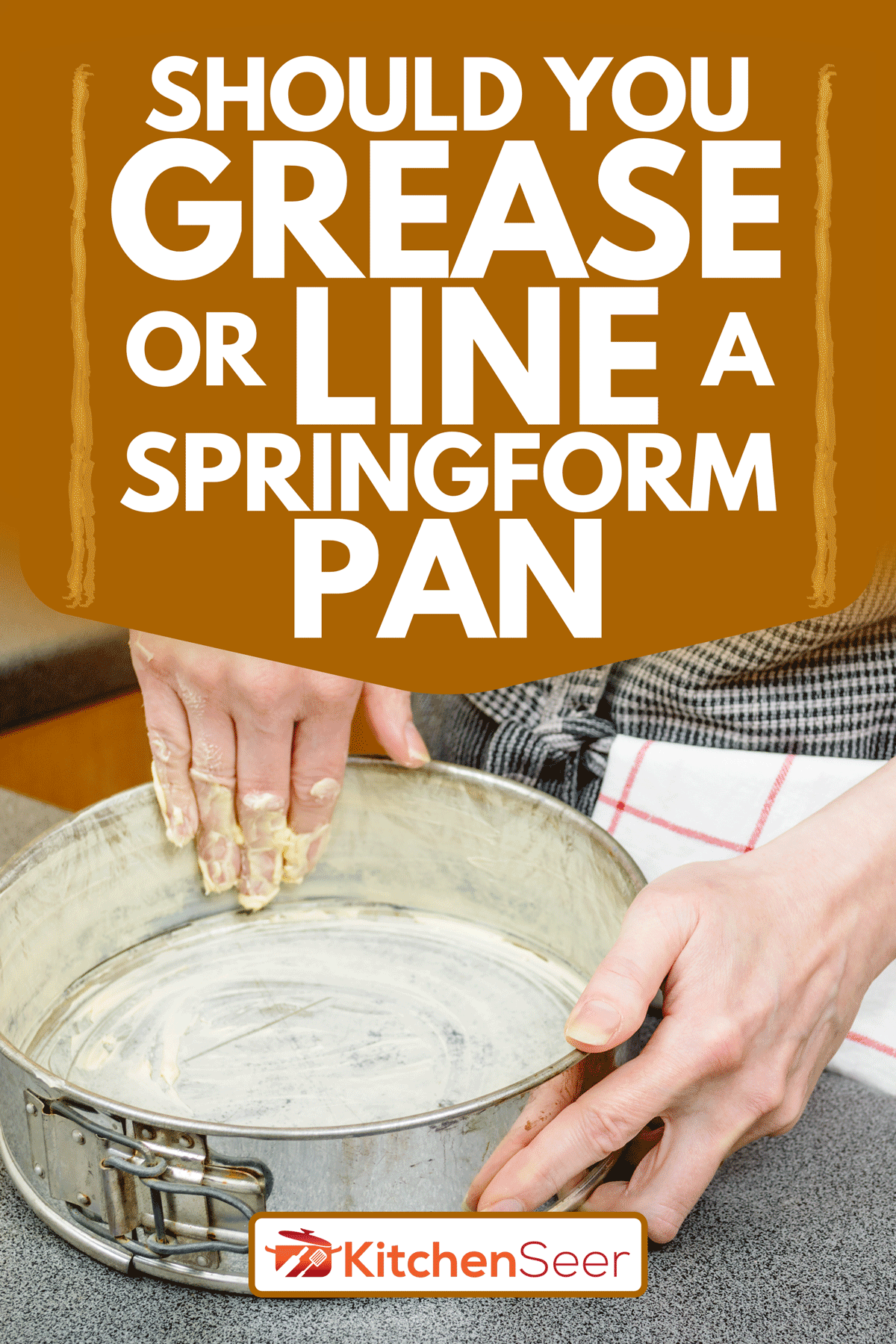
Pros & Cons of Greasing Vs. Lining A Springform Pan
Greasing even a non-stick springform pan will prevent your dessert or entree from sticking or breaking by providing an easy method to release the baked goods from the pan. However, grease can change the flavoring, color, or texture of your foods while baking. So, it's important to follow the recipe's recommendation and choose your type of grease wisely.
Parchment paper is typically used for lining a springform pan; it does not add or alter flavors or textures, leaving you with the intended result and an easy release from the pan. It also makes for an easy clean-up. Lining with parchment paper becomes the best choice, particularly if you bake a dessert that relies on leavening while baking, like angel food cake. Grease can prohibit the rise because the pan is now slippery and so that frothy, eggy batter cannot easily grip the sides. Fat-enriched batters, however, will continue to rise whether the pan is greased because these do not rely on using the grip to grow.
What is the best thing to use to grease a cake pan?
If you want to prevent stuck-on cake, using shortening to grease the pan is best. Shortening is pure fat, such as lard or coconut oil, that has simply solidified at room temperatures. It is often used as an ingredient in crumbly crust recipes to give texture. Using clarified butter will also be as effective as shortening. Shortenings like coconut oil and clarified butter can add significantly more flavor to your recipe. Alternatively, you can use a cooking spray.
Using butter is another greasing method but will also add flavor to your dessert. Unlike shortening, butter also contains water. When heated, steam is released, which can produce a crisped, browned crust during baking.
Always refer to your recipe first for a recommendation because based on the texture, flavor, and color of the intended outcome, the appropriate grease will work best. Brushing the pan's sides with olive oil is recommended for this delectable, Layered Roasted Vegetable Torte.
How to Grease A Cake Pan
You can apply the solidified bar of grease directly by pressing it onto the bottom and sides of the pan and then spread it evenly with your fingers (using thoroughly washed hands, of course!). Or, for a neater technique, you can use a clean paper towel with a layer of grease to wipe along the pan's bottom and sides.
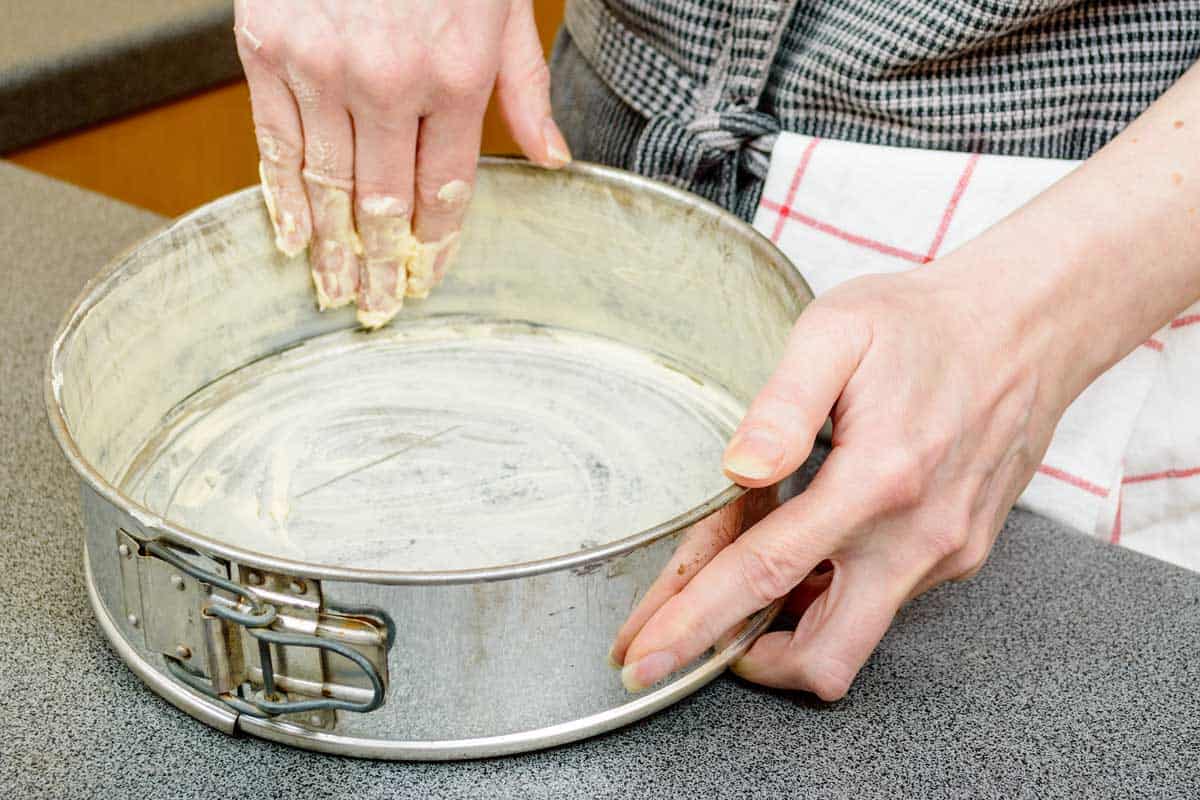
Should I flour a cake pan?
Flouring a springform pan, or greasing and flouring for that matter, is not typically necessary. Here again, refer to your recipe first. Tossing flour atop an already greased pan provides a light barrier to prevent your batter from soaking in excess grease while baking. It can also help heavily sugared batters not to stick or caramelize to the pan's base and along edges.
Why Grease only the bottom of the pan?
Applying grease to your cake or springform pan potentially alters your dessert's texture and color—grease aids in forming a lightly browned, crisp crust during the bake. So, if you don't want this golden hue and prefer to have your dessert's sides remain soft, fluffy, and yellow, brown, or white, you should avoid using grease along the sides of the springform pan. Instead, you can grease only the bottom of the pan or line the pan with parchment paper.
What do you line a springform pan with?
One of the best options is using parchment paper (or baking paper) if you've opted to line a springform pan. You can do this by either of two methods: lining the pan's base only or lining the pan's base and sides.
Lining A Springform Pan's Base
Before you begin, gather a few key items: scissors, parchment paper, spreadable or spray grease (optional), and a pencil. Next, unclip and remove the rim of the springform pan. Now, let's get started!
- Grease the pan's base. This will keep the parchment paper from sliding as you try to reattach the rim. You can use any spreadable grease (butter, Crisco, etc.) or cooking spray. Remember, this step is optional, so refer to your recipe for guidance and know that adding a flavorful grease like butter can slightly alter your dessert's flavor.
- For additional leak protection, use a piece of parchment that is larger than the pan's base; ensure it overhangs the base. If you simply line the circular base without any overhang, use the base as a stencil to trace the size onto the parchment paper; then, cut out the circular shape.
- Place the parchment paper onto the base. Gently press to smooth the paper, and stick to the grease if applied.
- Assemble the rim onto the pan's base. Do this overtop the overhanging parchment paper; it will provide a seal between the base and rim.
Check out this YouTube video to learn how to size your parchment paper to fit any springform (or round pan) base.
Lining A Springform Pan's Base & Sides
Before you begin, you'll want to gather scissors, parchment paper, spreadable or spray grease (optional), and a pencil. Let's line that pan!
- Grease the pan's bottom and sides. As we've mentioned, refer to your recipe for grease recommendation as flavorful greases can slightly alter or add flavor. The grease will keep the parchment paper in place.
- Line the pan's bottom by following the instructions above. Do this step first.
- Next, cut a piece of parchment paper in half lengthwise. You'll now have two narrow strips.
- Fold back one edge, lengthwise, on each strip. Snip multiple cuts into the fold using scissors.
- Place the strip, folded and snipped edge down, along the side of the pan. You'll see the cut edge enables the paper to conform to the pan's circular shape. Gently press the parchment paper against the side to stick to the grease.
Have a look at the YouTube video before for a visual guide on how to line your springform pan.
Don't have parchment paper? Just use one of these "5 Baking Paper Sheet Alternatives" instead!
Can you put parchment paper on the bottom of a cheesecake pan?
Using parchment paper to line your cheesecake pan will make retrieval easier and provide a simple transfer method from pan to serving tray. Double-check your recipe to see if a lining is recommended. Some cheesecake recipes will call for greasing the pan, especially if you've used butter as an ingredient in the crust.
If you don't have a springform pan, you can still make a cheesecake. Check out "Is A Springform Pan Necessary For Cheesecake?" for alternative pans.
Final Thoughts
Generally, a recipe will prompt you to either grease or line your springform pan. But if either is optional, use your baker's intuition to choose the best method for your intended result. Savory quiche? You might want to grease using oil or butter. Sweet trifle? Use a lining to easily remove the dessert from the pan without adding any unintended colors or flavors.

